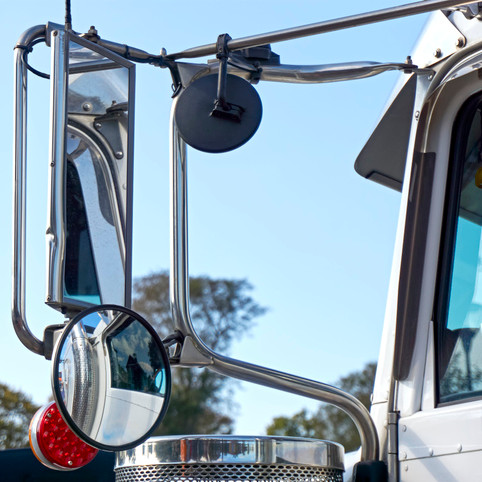Let’s take a look at some of the most common blind spots in commercial trucks and what you can do to avoid them and prevent accidents.
Every time you drive in a truck’s blind spot, you put yourself in harm’s way. This makes it worthwhile to know the different truck’s blind spot areas and how you can avoid them.
Let’s take a look at some of the most common blind spots in commercial trucks and what you can do to avoid them and prevent accidents.
What Is a Blind Spot?
A blind spot refers to that area of a vehicle that is not visible in the mirrors or by turning your head. While every vehicle has a blind spot, a driver of a smaller car generally has an easier time checking their blind spot than a truck driver. This is because:
- A truck’s length gives it a large space of no visibility.
- Commercial trucks are taller than passenger vehicles, making it difficult for truck drivers to see low-riding cars in front or beside them.
- Big rigs don’t have rearview mirrors.
Common Blind Spots in Commercial Trucks
There are four main truck “no-zones,” namely:
1. Front Blind Spot
A driver operating an 18- wheeler truck without a cab-over design may have trouble seeing the area in front of their truck. What’s more, this blind spot can extend up to 20 feet in front of the truck. You don’t want to overstay in this hot spot, or else you may get in a disastrous rear-end accident.
2. Right Side Blind Spot
The right-side blind spot starts at the edge of the right side of the cab and can run as far as three lanes of traffic.
Please note: when you are at the right side of a big rig, you may not be able to tell where the blind spot starts and ends. So, your best move is to keep away from this extremely dangerous zone.
3. Left Side Blind Spot
This blind spot begins from the left side of a truck’s cab and can run back at an angle as far as three traffic lanes. While the left-side blind spot is smaller than the right-side blind spot, staying in it for long increases your risk of underside, rollover, or side-impact accidents. Therefore, it’s generally best to avoid driving on the left side of any big truck. However, if you have to, always stay in an area where you can see the truck’s mirrors.
4. Rear Blind Spot
As large trucks have no rearview mirrors, their drivers generally can’t see behind the truck. In addition, rear no-zones can run as far as 30 feet from the back of the truck.
Speak With an Experienced St. Louis Car Accident Attorney
Have you been injured because a negligent truck driver failed to check their blind spot? Our experienced St. Louis car accident attorneys can help you understand your legal rights. Give us a call 24/7 for a free consultation.
FREE Consultation
Speak with an experienced attorney 24/7

